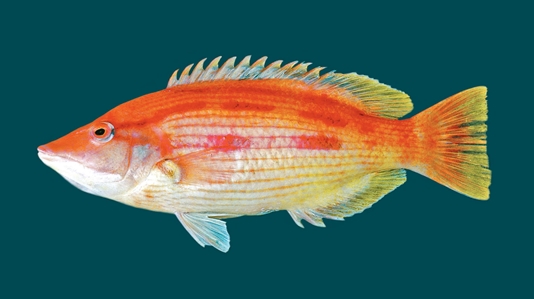General Description
Moderately large colourful fishes with slender, pointed snouts and large canine teeth in front of jaws; dorsal and anal fins with scaly basal sheaths. Juveniles and females with fine pinkish horinzontal lines and three thicker broken red stripes often with black centres along the upper body; stripes become less distinct with age. Males reddish above, often with a large whitish blotch on sides below rear of dorsal fin; anal fin pink, and a blue-edged black spot on dorsal fin. To 50 cm.
Biology
Pigfish change sex from females to males and have three colour phases during their life cycle. When they enter shallower water, they are occasionally seen by divers in about 30 m. They are taken on hook and line by recreational anglers in eastern Australia, and occasionally seen in commercial fish markets.
Habitat
Usually on deep reefs, in depths to 60 m.
Reefs
Distribution guide
New Zealand and eastern Australia. Rare in eastern and central Victoria.
Species Group
Fishes › Wrasses, rock whitings and allies
Depth
Shallow (1-30 m)
Deep ( > 30 m)
Water Column
Max Size
50 cm
Commercial Species
Yes
Global Dispersal
Recorded in Australia
Identify
Conservation Status
- DSE Advisory List : Not listed
- EPBC Act 1999 : Not listed
- IUCN Red List : Least Concern





